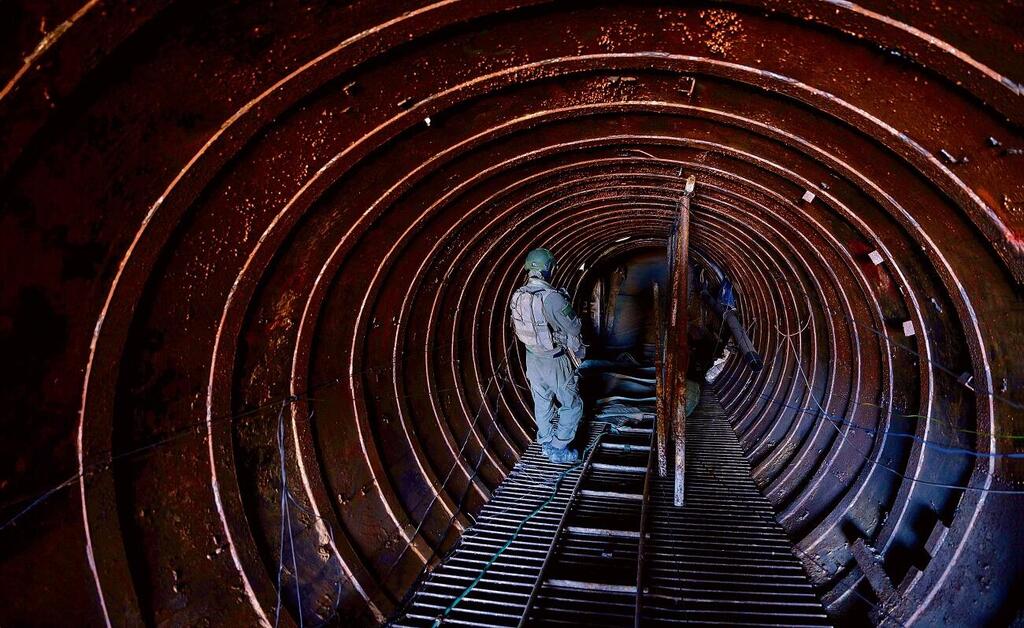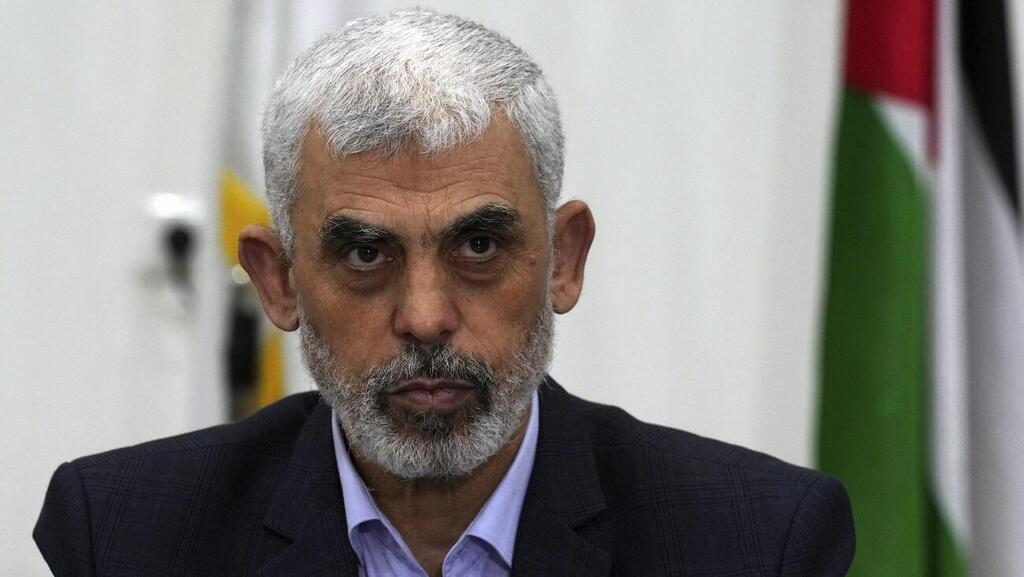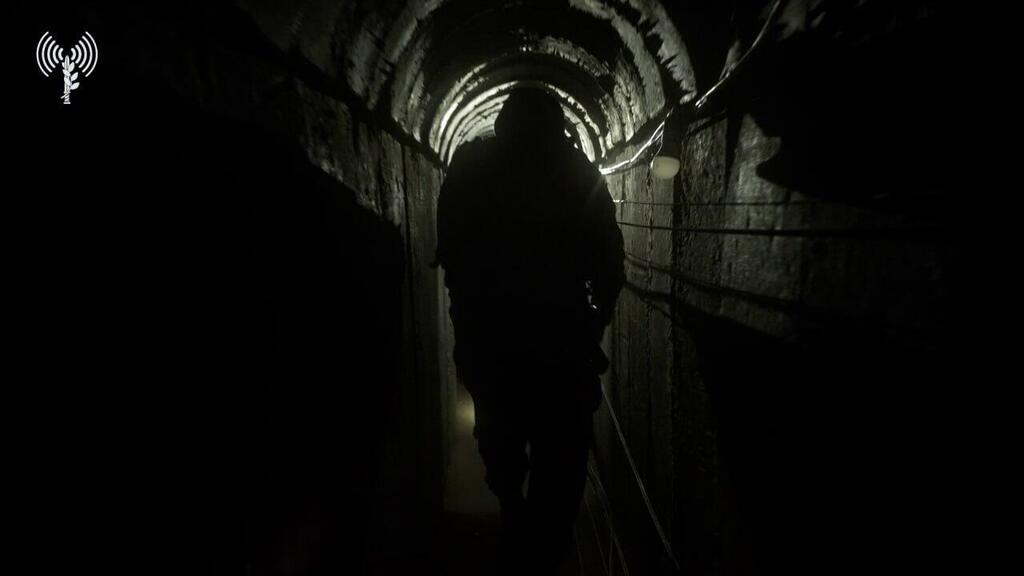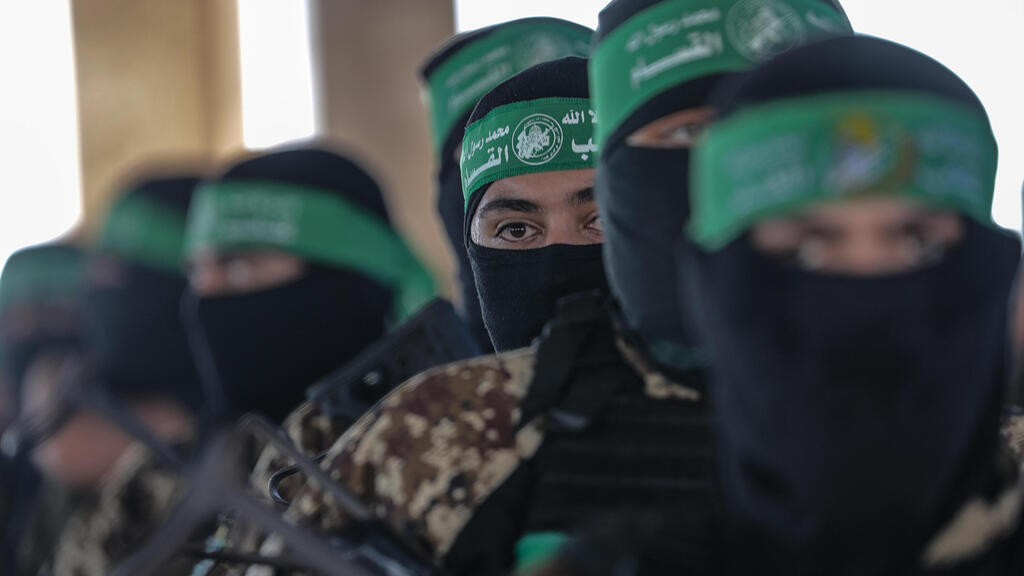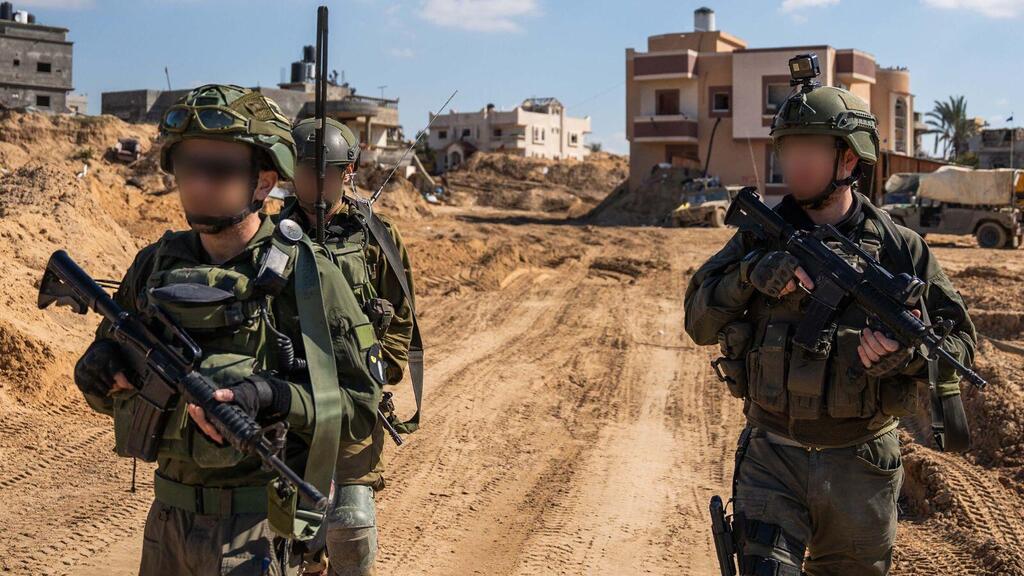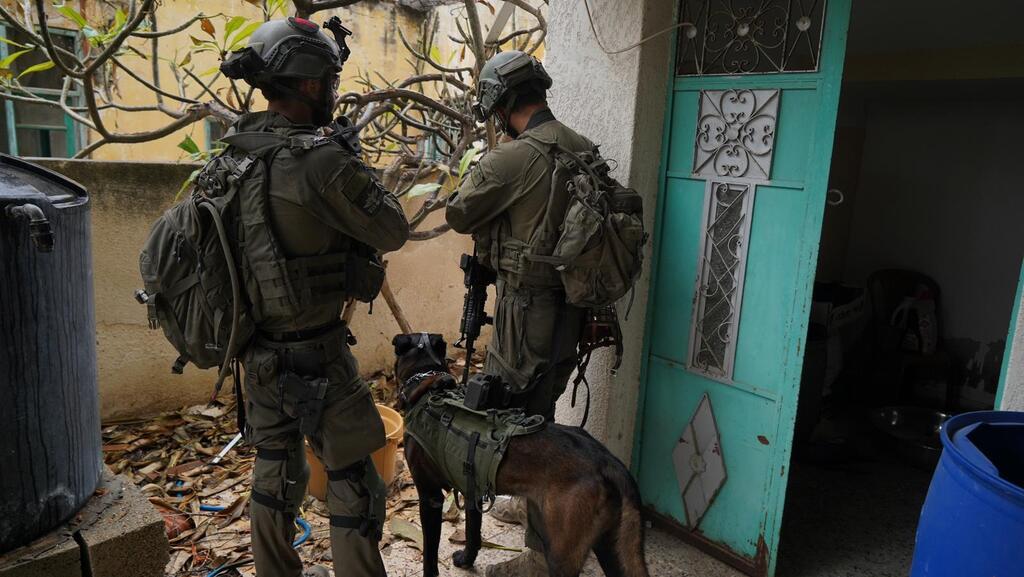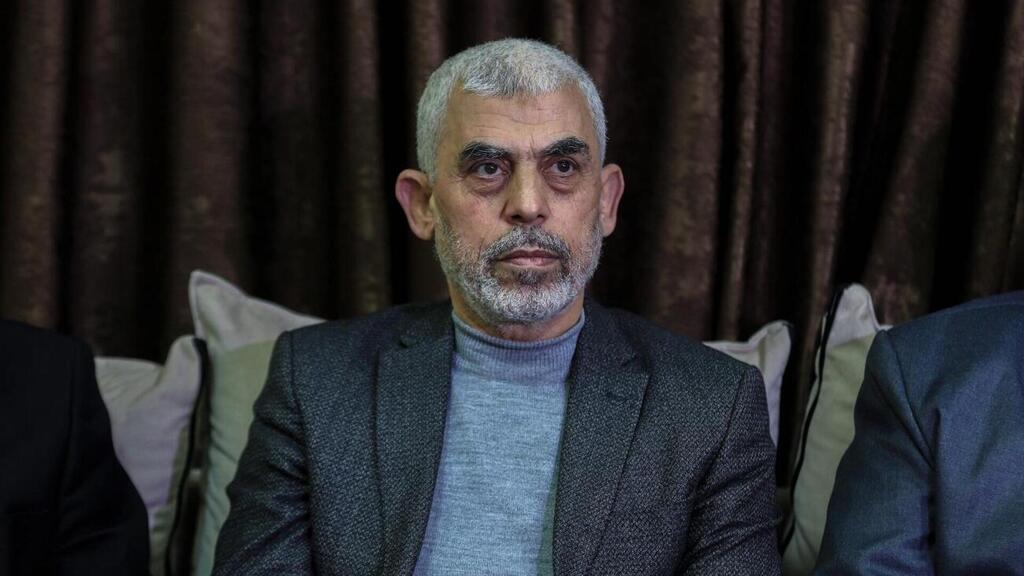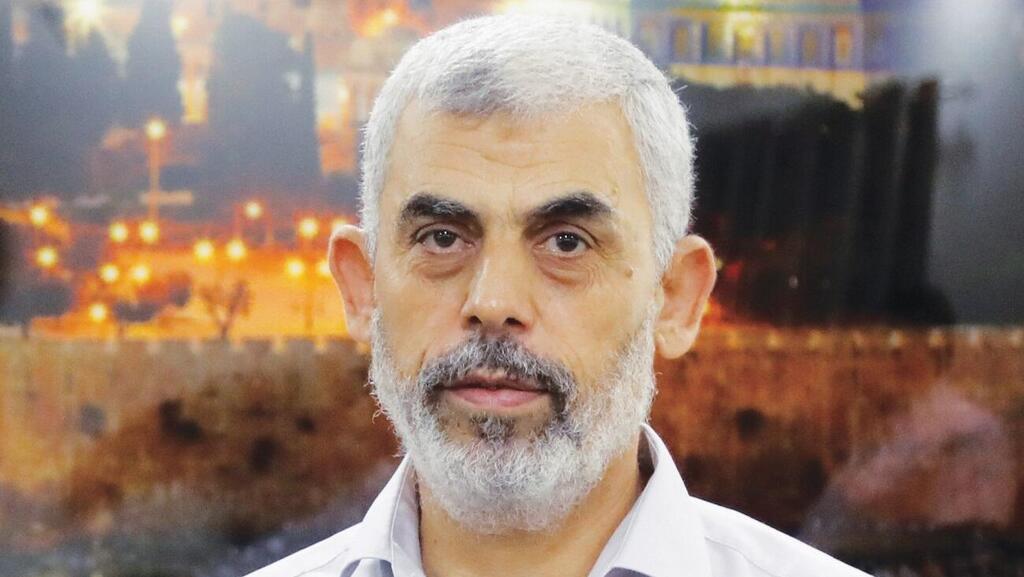Getting your Trinity Audio player ready...
Anyone who visited the Hamas tunnel in Khan Younis exposed by the IDF's special forces units more than a week ago would’ve known that Yahya Sinwar and other senior members of Hamas' leadership are running for their lives underground. The findings in the tunnel also clearly indicate that some of the Israeli captives are with them and that the terrorists forced them to move from one underground compound to another together with the senior members.
More stories:
In the two work compounds the tunnel led to, the IDF found personal belongings, clothes, weapons, explosives, and millions of dollars and shekels as well as documents detailing the amounts of money Iran transferred to Hamas in Gaza. Some of them were directly addressed to Sinwar.
Undoubtedly, those who stayed in these compounds would have taken the money with them and destroyed the documents unless they were forced to leave quickly once they heard the IDF forces and D9 bulldozers approaching.
An IDF Spokesperson’s Unit released on Thursday photos from one of the facilities in the tunnel which, according to all indications, held Israeli hostages, at least one of whom was injured. In the room was a single bed with an oxygen tank commonly used to treat patients and bandaging materials were scattered in the adjacent room.
In this narrow and elongated chamber, there were also mattresses on which the healthy hostages likely slept. The terrorists in their escape took the captives with them but left behind all of the oxygen tanks.
A reliable source who saw the tunnel and its facilities mentioned that parallel to the main tunnel, there was an additional tunnel with a restroom and a shower at its end, and through it, air entered the prisoners' room which was connected to it. According to the same source, the air in the tunnel was hot and stifling even when it was cold outside.
Soldiers from the special forces unit that took control of the tunnel believe the terrorists were surprised by the large number of hostages they had captured. Therefore, they had to convert an office in the subterranean facility into a prison room. Iron bars were installed in the narrow space and covered with thick cloth.
An entire industry has developed around the tunnels and Hamas’ "military metro system" in the area - from concrete walls in the tunnels, through large steel drilling rigs connected to electric motors, to small electric cars resembling golf carts in which senior Hamas officials traveled through the many kilometers of tunnels.
Since the discovery of this tunnel ten days ago, the IDF has discovered and explored three more locations where Sinwar stayed in the Khan Younis area, and from which he probably had to flee. With every passing day, signs indicate that Sinwar’s function as a leader is diminishing.
This is probably what Defense Minister Yoav Gallant meant when he said at a press conference on Monday that Sinwar is "fleeing, moving from hideout to hideout, and unable to communicate with his forces."
The Arab media reports that Hamas leadership in Doha, Qatar, tell their hosts and Egyptians that they’re having difficulty communicating with Sinwar and settling their disagreements with him, which is one of the reasons for the delay in the terror organization's response to the hostage release deal drafted in Paris.
It’s difficult to ascertain whether the leaders’ communication issues with Sinwar are a tactic intended to wear down the Israelis and intermediaries, or if he’s genuinely struggling to conduct clandestine communication due to his need to change hideouts frequently.
In any case, the Israeli military intelligence officials don’t attribute importance to the disagreements between Sinwar and Hamas’ leadership abroad. While figures like Ismail Haniyeh, Khaled Mashal, Musa Abu Marzook, Osama Hamdan, and others are influential members of the terror group’s leadership, they stay in Qatar or Lebanon.
Sinwar, on the other hand, is inside the Strip with Mohammed Deif and other senior Hamas commanders serving in its military wing, and he also holds most of the Israeli hostages. Therefore, he’s the only one who can currently decide what will happen to the captives, and his conduct will determine when and how the fighting in the Gaza Strip will end.
500 Palestinian prisoners sentenced to life
Three critical processes are underway these days: the negotiation for the release of the captives, the pursuit of Sinwar and his associates, and the IDF's preparations for the possibility of an operation in Rafah. The issue is that these issues don’t act in the same timeframe.
The challenge facing decision-makers in Israel is to synchronize these operations through a multi-phased deal, in which all the hostages will be released in exchange for extended periods of pauses in fighting, and later, Hamas's leadership will be removed from its control of the Strip via their deportation or another arrangement.
Even if the mediators fail to reach a major deal, there’s a chance they will persuade the parties to agree to what is called the "humanitarian stage," in which women, children, the sick, and the elderly will be released, and in return, Israel will concede to some of Hamas's demands.
In such a case, it will be agreed that the remaining issues concerning Hamas' demands and the release of the remaining hostages will be dealt with at a later date, during pauses in fighting.
If the mediators fail to bring the parties to agree on any deal, one can only hope that military and diplomatic pressure will ultimately force Sinwar to accept a deal.
An IDF ground operation in Rafah and the establishment of mechanisms for civilian governance and the distribution of humanitarian aid in the Strip may make it clear to Sinwar that he has nowhere else to escape with the hostages and that his chances of maintaining Hamas as a political and military force in Gaza are null, which would compel him to compromise. Israel's government may also reconsider and agree to terms it currently rejects.
Sinwar's challenge is using the hostages — the only card left in his hand — to enable Hamas’ survival in the Strip under his leadership. Initially underground and later, over the years, back on the surface, whether as a political entity, as part of a Palestinian civilian government in the Strip, or as an armed terrorist militia like Hezbollah in Lebanon.
Hamas' political leaders abroad have already begun to hold talks with the Palestinian Authority assuming that Israel will be forced to agree to Washington's demand that the body should manage Gaza’s affairs after the war.
Meir Ben-Shabbat, who headed the Shin Bet’s Southern Command and was chair of Israel’s National Security Council (NSC), knows Sinwar personally. According to him, the leader’s legacy and ethos he will leave behind are more important to Sinwar than his own life. Therefore, he won’t give up on his core demands: stopping the fighting and the IDF’s withdrawal from Gaza, the release of numerous Palestinian prisoners, and demands relating to prayer arrangements and presence on the Temple Mount.
These demands are reflected in the fine print of Hamas's response to the new hostage release deal presented by the mediators. For example, Hamas demands that Israel release 1,500 Palestinian prisoners, including murderers, in the first stage of the deal—alongside the release of Palestinian women, sick individuals, and youths.
Hamas demands that this mass release, which includes about 500 prisoners sentenced to life in prison, be carried out in the humanitarian stage, which also includes a 45-day cease-fire and the release of 35 Israeli hostages — women, children, sick individuals, and elderly. In other words, this is only the first stage of Palestinian prisoners to be released.
Additional demands included in Hamas' response include improving the conditions of Palestinian prisoners who will remain in Israeli prisons, revoking arrangements for Jewish visits to the Temple Mount, and restrictions on Muslim prayer in the local mosques. Hamas demands a return to the status quo that prevailed on the Temple Mount in 2002, before Operation Defensive Shield.
IDF soldiers will be returned in the second stage of the deal, which will also last 45 days during which agreements will be reached for another cease-fire and the military’s withdrawal from Gaza. Only in the third stage, after Israel fulfills most of its commitments, will Hamas deliver the bodies of Israelis who were killed in Gaza.
The War Cabinet’s reactions to Hamas' response ranged from opinions that the response was a ruse to make Israel refuse it to those believing more negotiations could be pursued following the proposal. Security officials refused to respond to the document, but believe that military pressure may change Sinwar's stance.
All senior security officials I met in the last ten days believe that the IDF and the Shin Bet will capture Sinwar soon. "We will bring him in, and it’ll take much less than the ten years it took the Americans to get Bin Laden," said a very senior intelligence official. The second issue agreed on by the officials is that the religious component is an important — if not the most critical —component in Sinwar's personality and conduct.
The third issue concerns Rafah. "If we don't catch him first, he'll be in real trouble when we get to Rafah," a senior IDF officer told me. According to him, Rafah is the only place in the Strip where Hamas’ military facilities are still operating.
According to Egyptian media, there are about 12 terror tunnels active below the Philadelphi Corridor. So Sinwar can escape through the tunnels from Khan Younis to Rafah and beyond, to Sinai, and from there out of the country via the Red Sea to a country that will grant him asylum, like Yemen. It's even possible that he’s now already in Rafah with the hostages, who serve as his human shields.
As long as the IDF’s Armored Corps don’t begin operating in Rafah, Sinwar will feel that he has political breathing room and an escape route, and will try to stall from time believing that Egypt, the United States, and the UN will prevent IDF from entering the refugee-filled city.
There are about 12 terror tunnels active below the Philadelphi Corridor, so Sinwar can escape through the tunnels from Khan Younis to Rafah and beyond.
In Israel, efforts are being made to obtain Egyptian consent to prevent breaches to the border fence and the attempted escape of Palestinian masses to Sinai in case the IDF attacks Hamas and Islamic Jihad battalions in Rafah.
The five scenarios in facing Sinwar
There are five possible scenarios in case the IDF succeeds in locating Sinwar but refrains from killing him for fear of harming the hostages.
One scenario is that Sinwar will agree to the Israeli-American proposal that will allow him to leave Gaza and go into exile. He will demand that Israel not eliminate him abroad, releasing the Israeli hostages and bodies held by Hamas in return.
According to all experts, the likelihood of Sinwar agreeing to go into exile is nonexistent. The same experts also believe that Sinwar won’t flee from Gaza of his own accord since it would be seen as disgraceful and a betrayal of the ethos in which he believes. He would prefer to die “as a Shahid."
In the second scenario, Sinwar will surrender himself and release the hostages in exchange for extensive release of Palestinian prisoners and assurances that Israel won’t eliminate him in prison. This will leave him a chance to make a political comeback at a later time.
Sinwar sees how Marwan Barghouti, who’s imprisoned in Israel, is frequently mentioned as the heir of Palestinian Authority President Mahmoud Abbas in leading Fatah and the Palestinian Authority.
If his plan succeeds, says an intelligence official, Sinwar himself may one day be released in a hostage deal and return to lead Hamas. Ben-Shabbat rules out the possibility that Sinwar will surrender and return to an Israeli prison.
In the third scenario, Sinwar will commit suicide to avoid being captured by the IDF. In such a case, the lives of hostages close to his side could be in danger. Sinwar is a ruthless man determined to harm Israelis. But it’s also possible that the terrorists guarding the captives will prefer to save their own lives and not harm them. The IDF refuses to assess the likelihood of such a scenario.
In the fourth scenario, the IDF will eliminate or capture Sinwar before he has a chance to order to harm the captives. The likelihood of such an operation being carried out and succeeding isn’t high, but it exists.
It’s likely that the IDF Chief of Staff, Defense Minister, and Israel’s War Cabinet won’t approve such an operation unless convinced it would be carried out successfully.
Another possible scenario is that IDF special forces unit soldiers will encounter Sinwar and his men underground and engage, in which Sinwar and some terrorists accompanying him would be eliminated, but the hostages will also be harmed.
Israel believes Sinwar and Hamas’ leadership in Gaza and abroad wish for a deal, and will agree to a partial deal in case negotiations fail, in which the first stage of hostage releases would be carried out in exchange for the release of high-profile Palestinian prisoners and other demands.
A separate round of negotiations will then have to be held on the release of the IDF soldiers held captive, who are Sinwar's ace in the ongoing war in Gaza.



